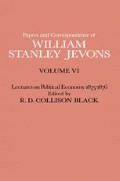Abstract
The means of increasing the production of such labour — that is in fact the main problem of P.E. We shall find ultimately that the wages, the receipts of the far* largest classes of the needy, if not the whole indeed, depend upon the productiveness of labour. But we ought to attach a definite idea to the productiveness of labour. Of course other things being the same the larger quantity of any commodity yielded by a certain quantity of labour, the greater its productiveness. That seems self evident. But, on the other hand, you must remember that the utility of the commodity is not necessarily proportioned to its quantity. On the other hand, the irksomeness or pain of labour is, again, not proportioned† to its duration. So that what we have really to compare is the utility produced as compared with the amount of pain undertaken. That is rather difficult. But making the proviso we may now look simply to the multiplication of the produce, which after all is the main source of increasing utility. And, as Adam Smith says, the greatest improvements in the productive powers of labour, and the greater part of the skill, dexterity, and judgment with which it is anywhere directed or applied seem to have been the effects of the division of labour. This subject of the division of labour is treated in the first three chapters.1 He begins by taking the pin manufacture as a kind of introductory illustration, as showing the wonderful increase of product arising fr. the dividing of that work, only intending it as an illustration of the same division as extends throughout society. All industrious society is a great machine, as it were, with different parts appropriated to different kinds of work. And as each factory is a part only of the industry of the country, so each workman in a factory is a part of the machine in that factory, as it were = a sub-division. In fact, it would not be bad to speak of the division of labour as occurring between persons not in the same building — not in the same form as a subdivision in other circs.
Access this chapter
Tax calculation will be finalised at checkout
Purchases are for personal use only
Preview
Unable to display preview. Download preview PDF.
Editor information
Copyright information
© 1977 R. D. Collison Black and Rosamond Könekamp
About this chapter
Cite this chapter
Black, R.D.C. (1977). Division of Labour. In: Black, R.D.C. (eds) Papers and Correspondence of William Stanley Jevons. Palgrave Macmillan, London. https://doi.org/10.1007/978-1-349-00723-3_5
Download citation
DOI: https://doi.org/10.1007/978-1-349-00723-3_5
Publisher Name: Palgrave Macmillan, London
Print ISBN: 978-1-349-00725-7
Online ISBN: 978-1-349-00723-3
eBook Packages: Palgrave Economics & Finance CollectionEconomics and Finance (R0)

